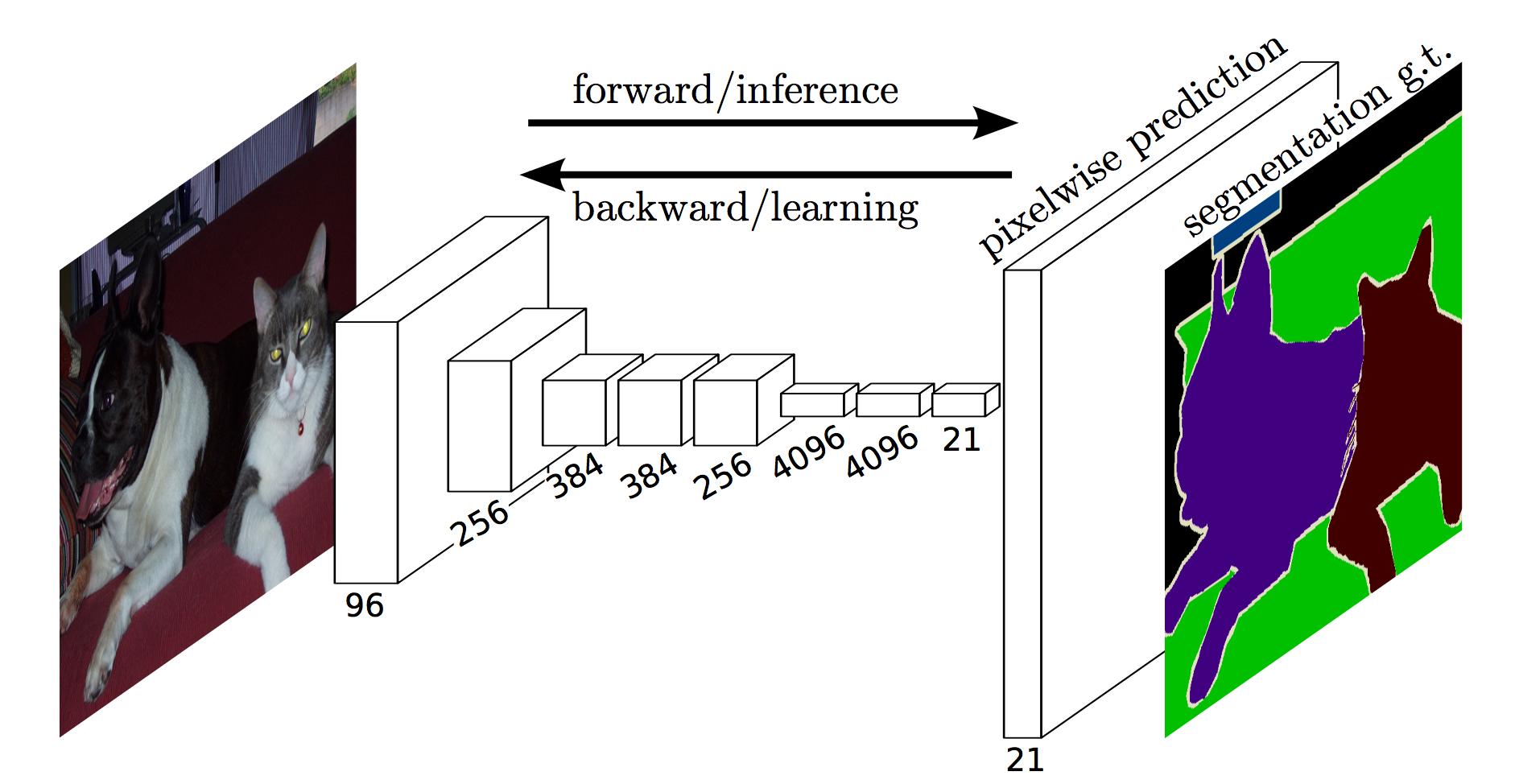1
2
3
4
5
6
7
8
9
10
11
12
13
14
15
16
17
18
19
20
21
22
23
24
25
26
27
28
29
30
31
32
33
34
35
36
37
38
39
40
41
42
43
44
45
46
47
48
49
50
51
52
53
54
55
56
57
58
59
60
61
62
63
64
65
66
67
68
69
70
71
72
73
74
75
76
77
78
79
80
81
82
83
84
85
86
87
88
89
90
91
92
93
94
95
96
97
98
99
100
101
102
103
104
105
106
107
108
109
110
111
112
113
114
115
116
117
118
119
120
121
122
| from __future__ import print_function, division
import tensorflow as tf
import numpy as np
import cv2
import scipy.io
import commentjson as json
conf = json.load(open("./config.json"))
logging.basicConfig(
level=logging.DEBUG,
format="%(asctime)s %(filename)s %(funcName)s(): %(lineno)i: %(levelname)s: %(message)s", )
logger = logging.getLogger(__name__)
def get_variable(weights, name=None):
init = tf.constant_initializer(weights, dtype=tf.float32)
return tf.get_variable(name=name, initializer=init, shape=weights.shape)
def weights_variable(shape, stddev=0.02, name=None):
init = tf.truncated_normal(shape, stddev=stddev)
return tf.Varialbe(init) if name is None else tf.get_variable(
name, initializer=init)
def bias_variable(shape, name=None):
init = tf.constant(0.0, shape=shape)
return tf.Varialbe(init) if name is None else tf.get_variable(
name, initializer=init)
def conv2d_basic(x, W, bias):
conv = tf.nn.conv2d(x, W, strides=[1, 1, 1, 1], padding="SAME")
return tf.nn.bias_add(conv, bias)
def conv2d_transpose_stride(x, W, b, output_shape=None, stride=2):
if output_shape is None:
output_shape = x.get_shape().as_list()
output_shape[1] *= 2
output_shape[2] *= 2
output_shape[3] *= W.get_shape().as_list()[2]
conv = tf.nn.conv2d_transpose(x, W, output_shape, strides=[1, stride, stride, 1], padding="SAME")
return tf.nn.bias_add(conv, b)
def avg_pool_2x2(x):
return tf.nn.avg_pool(x, ksize=(1, 2, 2, 1), strides=(1, 2, 2, 1), padding="SAME")
def max_pool_2x2(x):
return tf.nn.max_pool(x, ksize=(1, 2, 2, 1), strides=(1, 2, 2, 1), padding="SAME")
def vgg(weights, image):
layers = (
'conv1_1', 'relu1_1', 'conv1_2', 'relu1_2', 'pool1',
'conv2_1', 'relu2_1', 'conv2_2', 'relu2_2', 'pool2',
'conv3_1', 'relu3_1', 'conv3_2', 'relu3_2', 'conv3_3', 'relu3_3', 'conv3_4', 'relu3_4', 'pool3',
'conv4_1', 'relu4_1', 'conv4_2', 'relu4_2', 'conv4_3', 'relu4_3', 'conv4_4', 'relu4_4', 'pool4',
'conv5_1', 'relu5_1', 'conv5_2', 'relu5_2', 'conv5_3', 'relu5_3', 'conv5_4', 'relu5_4', 'pool5',
)
net = {}
current = image
for idx, name in enumerate(layers):
kind = name[:4]
if kind == "conv":
kernels, bias = weights[idx][0][0][0][0]
kernels = get_variable(np.transpose(kernels, (1, 0, 2, 3)), name=name+'_w')
bias = get_variable(bias.reshape(-1), name=name+'_b')
current = conv2d_basic(current, kernels, bias)
elif kind == 'relu':
current = tf.nn.relu(current, name=name)
elif kind == "pool":
current = avg_pool_2x2(current)
net[name] = current
return net
def inference(image, keep_prob):
image = image-tf.constant([123.68, 116.779, 103.939])
modelpath = conf["vgg"]
model_data = scipy.io.loadmat(modelpath)
weights = np.squeeze(model_data['layers'])
with tf.variable_scope("inference"):
image_net = vgg(weights, image)
conv_final_layer = image_net["conv5_3"]
pool5 = max_pool_2x2(conv_final_layer)
W6 = weights_variable([7, 7, 512, 4096], name="W6")
b6 = bias_variable([4096], name="b6")
conv6 = conv2d_basic(pool5, W6, b6)
relu6 = tf.nn.relu(conv6, name="relu6")
relu_dropout6 = tf.nn. dropout(relu6, keep_prob=keep_prob)
W7 = weights_variable([1, 1, 4096, 4096], name="W7")
b7 = bias_variable([4096], name="b7")
conv7 = conv2d_basic(relu_dropout6, W7, b7)
relu7 = tf.nn.relu(conv7, name="relu7")
relu_dropout7 = tf.nn.dropout(relu7, keep_prob=keep_prob)
W8 = weights_variable([1, 1, 4096, conf["num_of_classes"]], name="W8")
b8 = bias_variable([conf["num_of_classes"]], name="b8")
conv8 = conv2d_basic(relu_dropout7, W8, b8)
deconv_shape1 = image_net["pool4"].get_shape()
W_t1 = weights_variable([4, 4, deconv_shape1[3].value, conf["num_of_classes"]], name="W_t1")
b_t1 = bias_variable([deconv_shape1[3].value], name="b_t1")
conv_t1 = conv2d_transpose_stride(conv8, W_t1, b_t1, output_shape=tf.shape(image_net["pool4"]))
fuse_1 = tf.add(conv_t1, image_net["pool4"], name="fuse_1")
deconv_shape2 = image_net["pool3"].get_shape()
W_t2 = weights_variable([4, 4, deconv_shape2[3].value, deconv_shape1[3].value], name="W_t2")
b_t2 = bias_variable([deconv_shape2[3].value], name="b_t2")
conv_t2 = conv2d_transpose_stride(fuse_1, W_t2, b_t2, output_shape=tf.shape(image_net["pool3"]))
fuse_2 = tf.add(conv_t2, image_net["pool3"], name="fuse_2")
shape = tf.shape(image)
deconv_shape3 = tf.stack([shape[0], shape[1], shape[2], conf["num_of_classes"]])
W_t3 = weights_variable([16, 16, conf["num_of_classes"], deconv_shape2[3].value], name="W_t3")
b_t3 = bias_variable([conf["num_of_classes"]], name="b_t3")
conv_t3 = conv2d_transpose_stride(fuse_2, W_t3, b_t3, output_shape=deconv_shape3, stride=8)
pred = tf.argmax(conv_t3, dimension=3, name="prediction")
return tf.expand_dims(pred, dim=3), conv_t3
|

